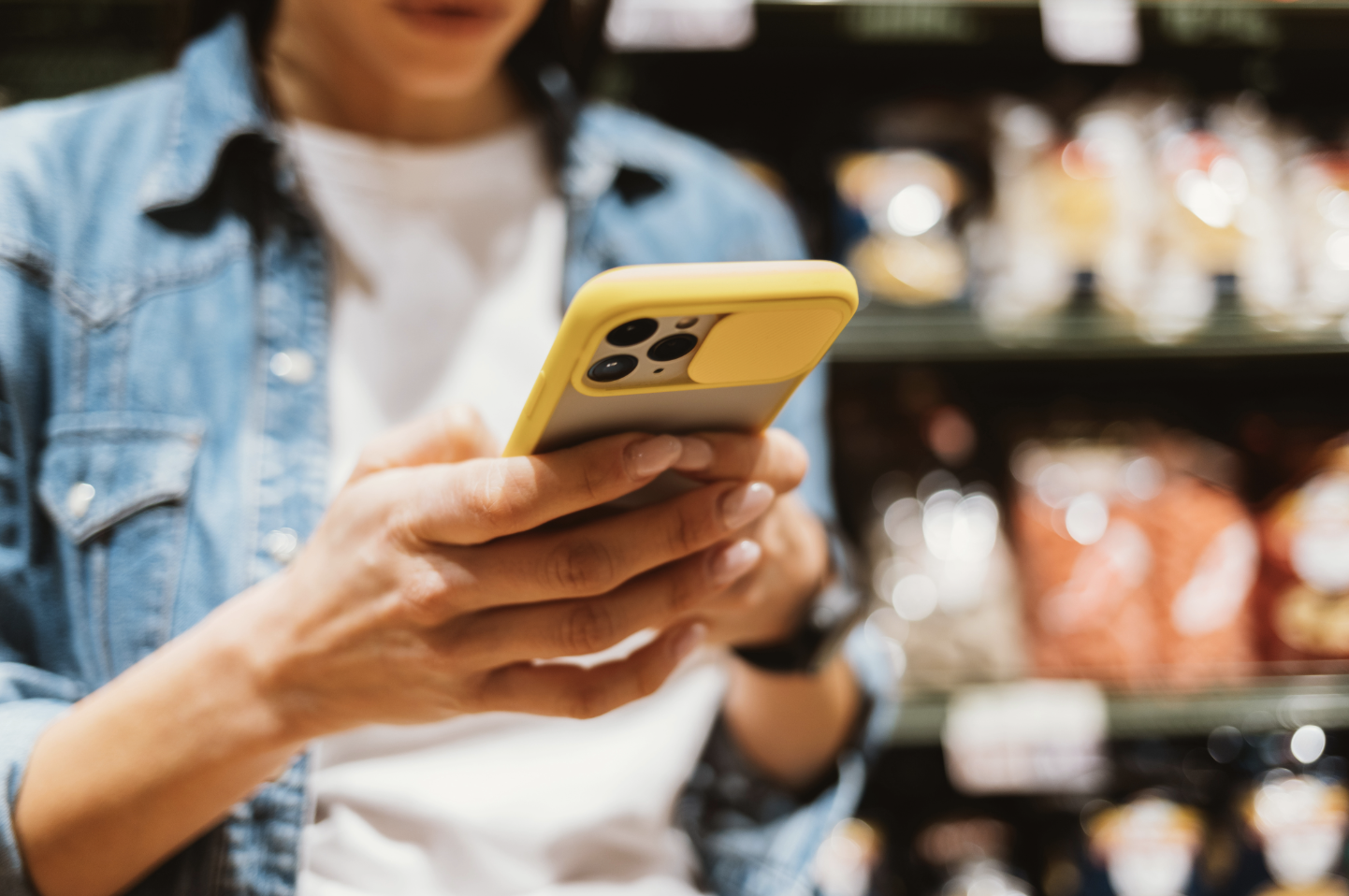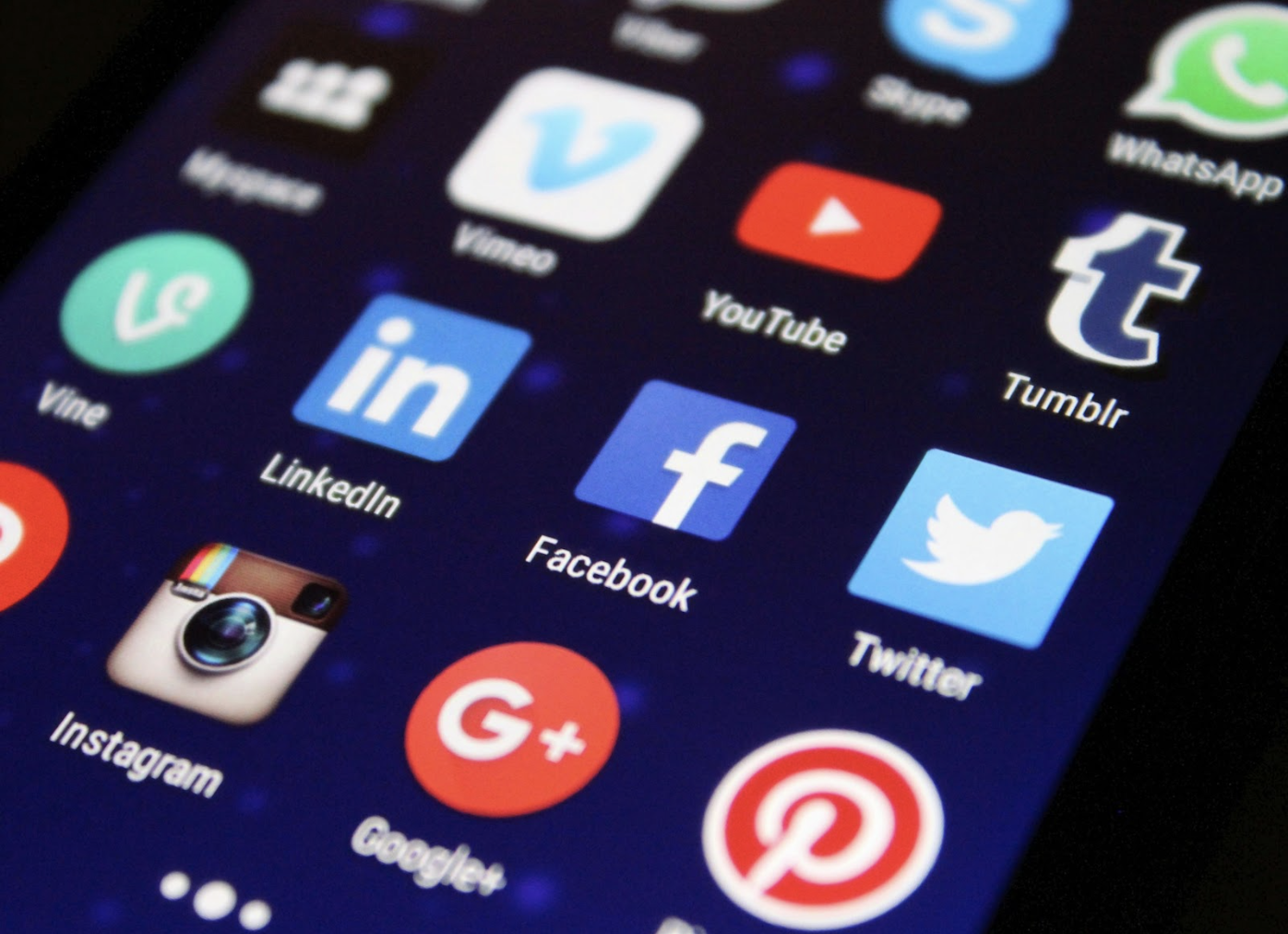Advertising on Google or Meta is like competing in a shouting match at rush hour in a restaurant - the cost keeps rising, and most brands end up ignored. Burger King broke from this spiral by engineering some of the most ROI-positive, attention-grabbing campaigns in recent marketing history. From a 37:1 ROAS via geofenced competitor targeting to 2 billion earned media impressions for the Moldy Whopper, they’ve turned provocation, real-time engagement, and data-driven precision into a global brand growth machine. Here are 11 tactics fueling Burger King’s marketing dominance, and how you can adapt them right now.
Master the art of competitive warfare marketing
Burger King’s marketing strategy thrives on direct competition, using bold tactics to turn its rivalry with McDonald’s into an engine for global brand growth.
The Whopper Detour campaign is the blueprint. Burger King geofenced McDonald’s locations, letting app users unlock a one-cent Whopper deal when they’re within 600 feet of a competitor’s store. This precision targeting generated 1.5 million app downloads in just 9 days and shot the Burger King app to #1 in the App Store. The campaign delivered a 37:1 return on investment, proving that proximity-based offers drive both digital engagement and real-world visits.
Direct competitor targeting isn’t limited to mobile deals. Burger King’s “Burn that Ad” campaign used AR to let users “burn” rival ads on their phones - rewarding them with a free Whopper. This tactic turned competitive ads into Burger King’s own acquisition funnel, amplifying earned media and reinforcing the brand’s challenger status.
Burger King’s willingness to shock is not just for attention. Campaigns like Burning Stores - where ads featured real franchise locations engulfed in flames - sparked international debate. The mystery and dark humor around these images fueled rapid viral reach, with engagement rates triple those of standard fast-food ads. Each instance of controversy is engineered for maximum shareability, turning surprise into conversation and conversation into cultural relevance.
Big Mac knockoff campaigns and playful product jabs form another layer of this strategy. By lampooning McDonald’s iconic sandwiches or referencing their menu limitations, Burger King keeps the rivalry front and center in digital culture and consumer conversation.
Burger King’s “perfectly imperfect” brand positioning is core to its differentiation. While McDonald’s maintains a polished, corporate image, Burger King leans into authenticity, humor, and even a little chaos. The brand’s willingness to poke fun at itself - and its competitors - translates to higher engagement, especially among younger consumers who crave transparency and personality.
Key competitive warfare tactics include:
- Geofenced offers targeting competitor locations
- Social and AR campaigns that hijack rival messaging
- Product comparisons that spark viral debate
- Embracing imperfection over polish to create emotional resonance
By making rivalry a marketing asset, Burger King transforms traditional category competition into a scalable, high-ROI growth engine.
Create provocative content that sparks global conversations
Provocation is Burger King’s accelerator for viral marketing strategy and earned media generation. The Moldy Whopper campaign is a masterclass in controversial marketing campaigns, deliberately breaking category norms by showcasing a Whopper decaying over 34 days. The payoff was massive: over 2 billion global impressions and a 4% bump in sales, all tied to a clear preservative-free message.
This approach is grounded in the brand’s “perfectly imperfect” philosophy. Audiences are drawn to this authenticity, especially Gen Z and Millennials who are quick to dismiss brands that feel too safe or staged. By publicizing imperfections, Burger King signals transparency and confidence, building trust through honesty.
And it works. Calculated controversy translates into millions in earned media and measurable sales lifts. Viral marketing campaigns centered on authenticity routinely outperform traditional strategies, driving higher engagement and rapidly amplifying Burger King’s global brand presence.
- 2B impressions and 4% sales lift from Moldy Whopper campaign
- 3x engagement rate vs standard ads for controversial content
- Millions generated in earned media through calculated shock value
- Brand loyalty reinforced by “perfectly imperfect” storytelling
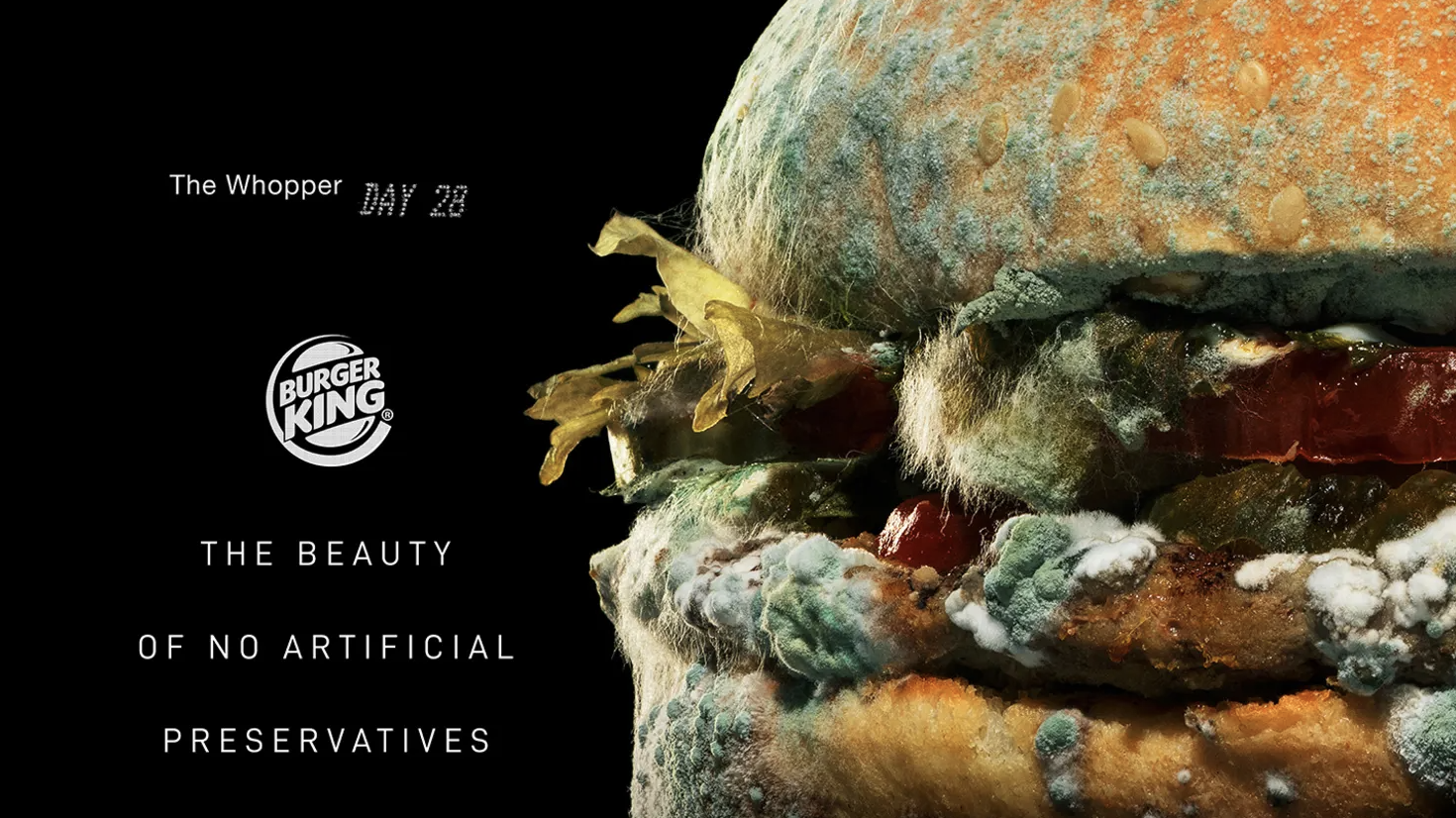
Dominate social media through witty real-time engagement
Burger King’s Twitter engagement tactics are a guide for challenger brands - its competitive banter has driven a 25% increase in followers, fueled by clever callouts and meme-worthy responses that made headlines beyond the platform.
Burger King’s team continues to track trends and conversations, jumping into viral moments and responding to competitor missteps within minutes. This immediate approach means campaigns feel organic and capture consumer attention as events unfold.
Pop culture collaborations have also amplified BK’s reach. The Stranger Things campaign with Netflix, featuring the upside-down Whopper, sparked a 40% surge in engagement. Fans shared photos, debated the campaign, and turned a menu stunt into a viral event.
TikTok engagement tactics also keep Burger King relevant with younger demographics. Short-form videos use humor, irreverence, and trending sounds to boost shares and comments and meet Gen Z where they spend time online.
By embracing an authentic, sometimes chaotic voice, Burger King has built a personality that encourages fans to join in, as seen in:
- 25% Twitter follower growth from witty competitor banter
- 40% engagement lift from Stranger Things/Netflix collaboration
- Social listening enables immediate campaign response
- Irreverent humor cements authentic brand personality
Pioneer geofencing and location-based marketing
Burger King’s geofencing strategy turns proximity into profit, leveraging technology to reach consumers at the exact moment they’re primed to act.
Burger King’s Traffic Jam Whopper campaign in Mexico City is also a great example. Using real-time traffic data and location intelligence, Burger King identified drivers’ locations and delivered app-based offers for Whopper delivery straight to their cars, resulting in a 63% jump in delivery orders and a surge in app engagement. This campaign proved that mobile marketing innovation can drive incremental sales by meeting customers where they are - even in the middle of a traffic jam.
Burger King’s geofencing success relies on three factors:
- Hyper-targeted campaigns using real-time location data
- Seamless mobile experiences that convert intent to action
- Technology-enabled differentiation from traditional QSR competitors

Embrace AI and technology for customer co-creation
Burger King’s AI marketing strategy turns customers into co-creators, giving them a direct role in shaping the menu and campaigns. The Million Dollar Whopper contest - where over 1 million entries poured in - invited fans to invent their own Whopper, blending mass customization with real consumer input.
Burger King used AI to sift through submissions, spot trends, and push the most promising creations into its innovation pipeline. Menu items designed by real customers, not just test kitchens, reached sellout status much faster.
Burger King’s approach reflects a broader shift toward user-generated content campaigns, where technology amplifies the creative voice of the customer. AI enables the brand to analyze preferences at scale, transforming millions of data points into actionable insights that drive product launches and marketing activations.
In 2025, Burger King’s AI-driven marketing innovations go beyond menu ideation. Personalization technology powers campaign targeting - serving up custom offers and messaging based on real purchase behavior and stated preferences. This focus on relevance keeps the brand front of mind with Gen Z and Millennial audiences who expect brands to listen and respond.
Chipotle’s co-creation campaigns - like crowd-sourced menu hacks turned official products - show that this model isn’t limited to burgers. Brands that invite participation and use AI to refine and scale ideas are setting the standard for modern customer engagement.
- 1M+ entries in Million Dollar Whopper contest
- AI-powered personalization drives menu sellouts
- Co-creation enhances innovation pipeline
- User-generated campaigns deepen brand connection
- Chipotle leverages similar crowd-sourced innovation
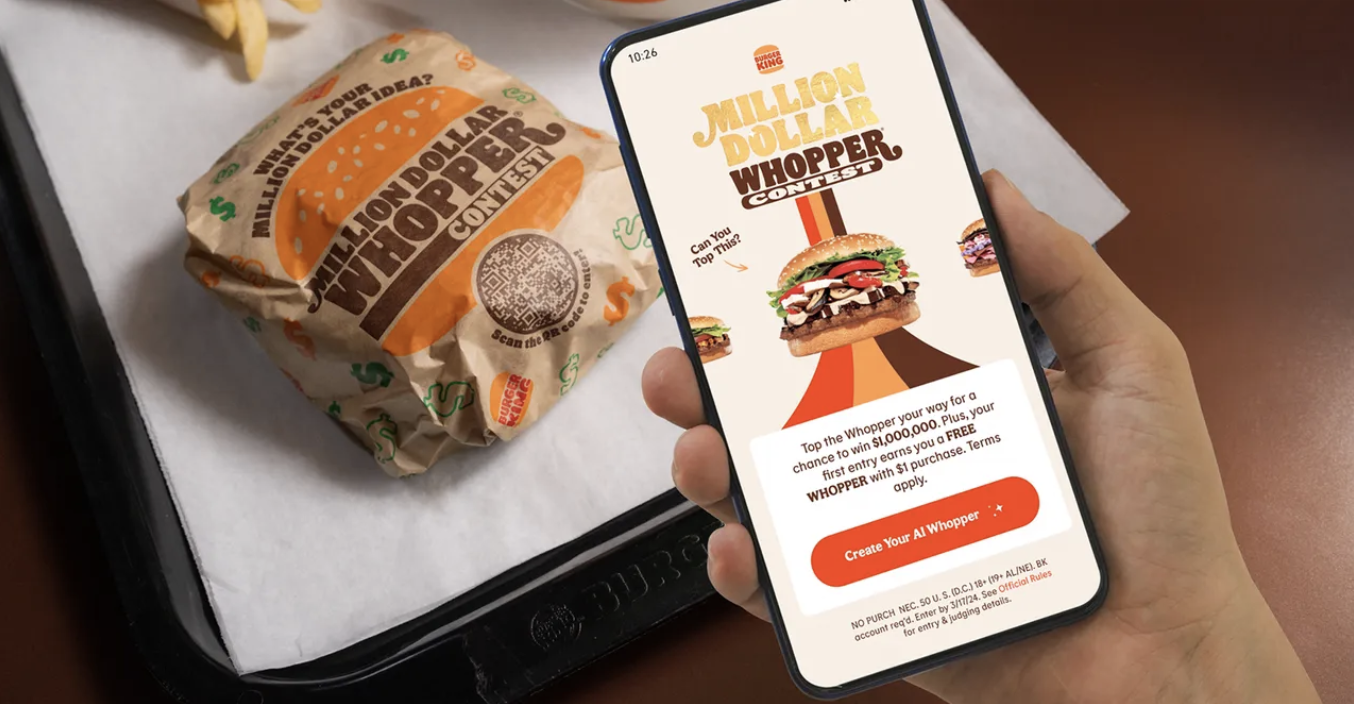
Execute bold rebranding with "You Rule" positioning
Burger King’s 2022 rebranding is a reset of how the brand speaks to consumers and franchisees worldwide. The "You Rule" campaign, launched as the centerpiece of the $400 million "Reclaim the Flame" initiative, replaces the passive “Have It Your Way” with a direct, empowering message designed for a new generation. This shift injects energy into Burger King’s brand positioning strategy and delivers a clear emotional articulation: the customer is in control.
The new jingle reworks Burger King’s iconic tune, layering in modern production and lyrics that reinforce customer agency. This is a deliberate move to make the brand’s voice relevant, memorable, and sharable across social platforms, TV, and in-app experiences.
Burger King’s "You Rule" positioning impacts every channel, from digital banners to drive-thru menus. Whether a customer sees an ad, opens the app, or visits a location, the messaging aligns with the new promise of personal empowerment.
Franchisees are on board, too. As part of "Reclaim the Flame," ad fund contributions increased from 4% to 4.5%, signaling deep buy-in for this unified strategy. Franchisees benefit from the halo effect of a revitalized brand: more foot traffic, higher engagement, and a clear narrative that cuts through the noise of fast food advertising.
- "You Rule" campaign launched July 2025
- $400M "Reclaim the Flame" investment backing the brand evolution
- Franchisee ad support increased, enabling omnichannel consistency
- Emotional articulation and jingle refresh drive modern relevance
- Unified brand promise connects every consumer touchpoint
Develop family-first marketing through strategic partnerships
Burger King’s family marketing strategy in 2025 prioritizes multi-generational engagement, using entertainment partnerships to expand beyond its traditional young adult focus. The collaboration with DreamWorks (the “How to Train Your Dragon” campaign) positioned Burger King as a destination for family experiences, not just quick meals.
Movie-themed campaigns go beyond standard toys. Burger King launched colored Whopper buns and limited-edition menu items inspired by DreamWorks characters, making family visits feel like events. These visual, interactive elements drive demand from both kids and parents seeking novelty and shared moments, encouraging larger group orders and repeat visits.
Kid-friendly promotions reinforce this family-first approach. Special meal bundles, collectible packaging, and augmented reality games connected to movie releases increase dwell time and brand affinity. Burger King’s strategic shift has led to family segment growth that now outpaces its core 18-34 demo, proving the value of demographic expansion through entertainment-led partnerships.
Strategic entertainment partnerships generate incremental growth by:
- Creating menu excitement with movie tie-ins and themed food
- Offering exclusive in-store experiences for families
- Launching promotions that appeal across age groups
- Attracting new demographics beyond the burger’s traditional audience

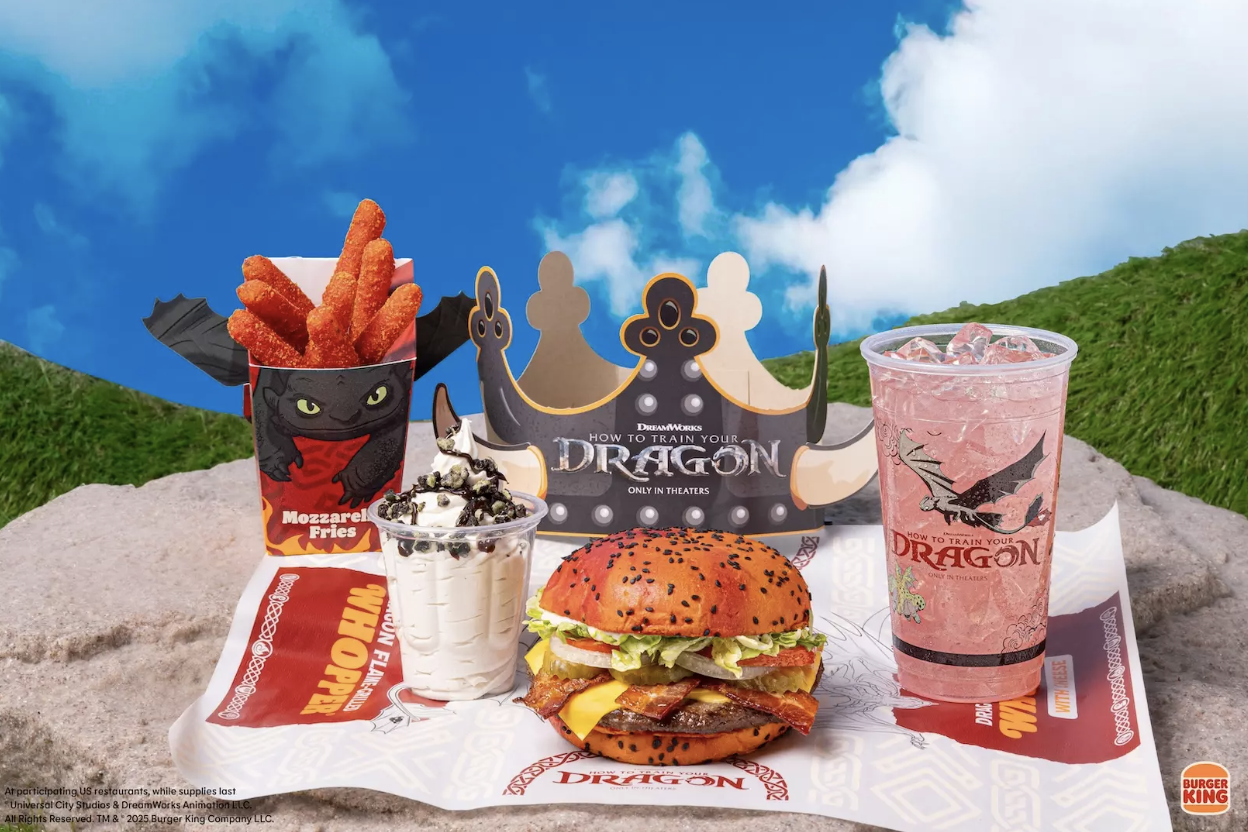
Build global localization without losing brand identity
Burger King’s global marketing strategy succeeds by balancing worldwide consistency with sharp localization tactics. With over 18,000 restaurants in 100+ countries, Burger King adapts to local tastes without sacrificing its core identity, maintaining roughly 85% brand consistency even as menus shift by region.
In India, for example, the Veg Whopper and paneer burgers have become a flagship product, helping the brand break into a vegetarian-majority market and unlock a new customer base. Instead of forcing a standard menu, Burger King develops recipes that align with local dietary norms and flavor preferences, ensuring relevance and resonance.
A hyper-local approach in Brazil has weaved Burger King into the cultural fabric.National promotions and limited-edition menu items celebrate classic Brazilian food, like cheese and guava-filled items, but also Brazilian holidays, music, and sports.
Burger King’s flexibility drives international expansion without diluting its flame-grilled identity.
- 18,000+ stores in 100+ countries
- Regional customization preserves 85% core branding
- India’s Veg Whopper and Brazil’s cultural menus boost local relevance
- Localized campaigns foster loyalty and drive growth

Convert sustainability into marketing advantage
Burger King was the first national QSR to scale a plant-based menu item, the Impossible Whopper , driving a 5% increase in US sales while attracting new customer segments seeking meat alternatives. For Gen Z and Millennial shoppers, this was proof that the brand listens and adapts to growing environmental and ethical expectations.
Animal welfare commitments have become an active part of Burger King’s corporate social responsibility (CSR) marketing strategy, too. The pledge to use 100% cage-free eggs across all US locations by 2025, alongside a shift toward crate-free pork, signals long-term accountability and a tangible departure from empty sustainability rhetoric. Packaging initiatives - such as introducing recyclable materials and reducing single-use plastics - further reinforce the message that Burger King’s promises go beyond the press release.
These moves turn sustainability into a competitive differentiator. Campaigns promoting plant-based and animal-friendly options consistently outperform legacy promotions with younger cohorts, driving positive sentiment and purchase intent.
- Impossible Whopper launch: 5% US sales boost
- 100% cage-free eggs by 2025
- Recyclable packaging and animal welfare as brand priorities
- Plant-based menu draws Millennial and Gen Z engagement

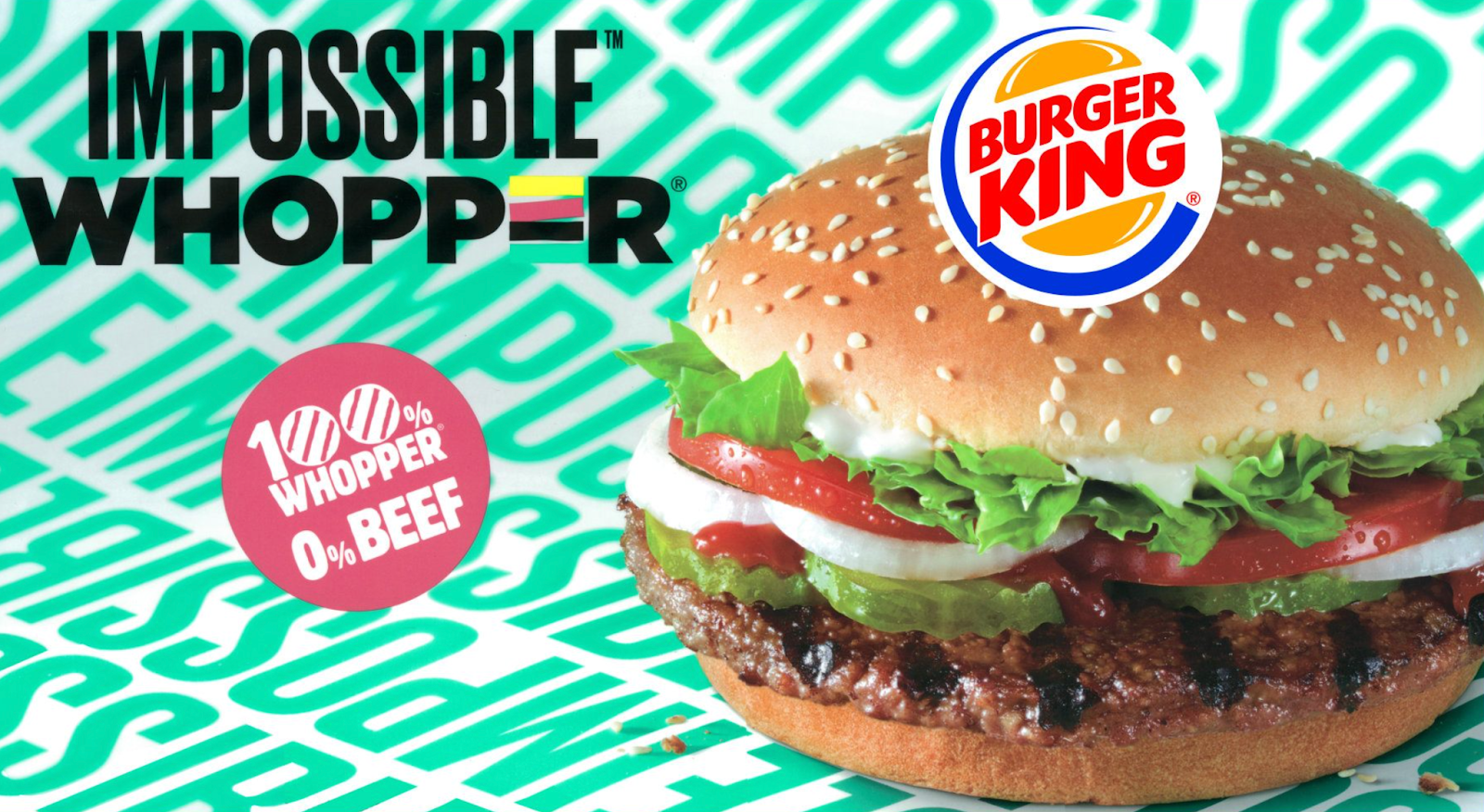
Maximize value perception through strategic pricing
Burger King’s pricing strategy is engineered to drive value marketing without compromising quality or brand differentiation. By offering bundled combos, Burger King consistently achieves 20% higher average order values, giving guests more for less while boosting transaction size.
Cash-back offers and digital loyalty rewards are increasingly integrated into promotions. With cash-back offers, customers are incentivized by receiving credit in their customer account.. This way, guests are also incentivized to spend more and return often, reinforcing the price-value equation through financial benefits that feel tangible and immediate.
In a direct challenge to McDonald’s, Burger King offers $1 menu items to win price-sensitive customers during economic downturns, making it easy for consumers to justify a visit even when discretionary spending is tight.
But Burger King doesn’t focus solely on cost – they consistently reinforce the message that flame-grilled burgers warrant their price points.
- Bundle meals lift average order value by 20%
- $1 menu items directly target McDonald’s value audience
- Price-value messaging increases visits during downturns
- Flame-grilled quality justifies premium positioning
- Cash-back and rewards deepen value perception

Scale Through Franchise-Powered Marketing Innovation
Burger King’s franchise marketing model is built for global reach and rapid adaptation. With over 18,000 franchised locations worldwide, the brand leverages the collective power of local operators while maintaining strong national and global campaign consistency.
Franchisees play a direct role in Burger King’s marketing fund strategy. By contributing a percentage of sales to a shared marketing fund, local operators unlock access to high-impact national campaigns that would be cost-prohibitive for a single store. This pooled investment fuels everything from major TV ads to digital launches, ensuring that every location benefits from brand momentum and broad consumer awareness.
Local market adaptation is core to the model. Franchisees have the flexibility to tailor menu items, promotions, and in-store experiences to regional tastes, while adhering to corporate brand standards.
Franchise-driven innovation emerges from this distributed approach. Operators on the ground often pilot new products or service models, which, if successful, are scaled across the network. The outcome of this is clear: a brand that moves fast, adapts globally, and delivers marketing firepower on a scale few competitors can match.
- 18,000+ franchised locations
- Shared marketing fund powers large-scale campaigns
- Flexible adaptation to local market needs
- Franchise pilots drive innovation for the system

Leverage data-driven insights for campaign optimization
At Burger King, every channel, from mobile to in-store, is tracked and optimized to maximize ROI and eliminate wasted spend.
App download metrics are monitored daily, allowing Burger King to spot spikes from initiatives like the Whopper Detour and refine creative or targeting in real time. Social media engagement data is dissected to understand which posts fuel conversation, allowing the team to double down on viral tactics and adjust messaging for maximum resonance.
Location data powers precision targeting. By analyzing where and when customers interact with offers, Burger King tailors campaigns by geography and context, ensuring that ads reach the right audience at the right moment. This location intelligence was key to the Whopper Detour’s 37:1 ROI, showing how data insights directly drive campaign performance.
A/B testing is routine. Every campaign element - copy, visuals, offers - is tested and iterated to find what delivers the highest return.
- 37:1 ROI achieved through targeted data analysis
- Daily app download tracking for rapid campaign shifts
- Social engagement and location analytics guide targeting
- A/B testing refines every campaign element

Final words
BK commands attention by sparking viral buzz and using tech innovation to win every battle for customer attention.
Each campaign taps data to fuel measurable growth and brand love across new demos.
And the bold moves Burger King takes proves marketing strategy isn’t just about ads - it’s about culture, humor, and meeting consumers where they are.
The future favors brands that turn disruption into connection, and BK shows there’s real advantage in daring to be different.
FAQs burger king marketing strategy
Q: What is Burger King’s marketing strategy?
Burger King’s marketing strategy centers on challenger campaigns, provocative content, and direct targeting of rivals like McDonald's. The brand leverages technology, first-party data, and humor to drive engagement, measurable ROI, and real loyalty.
Q: What are the 4Ps of marketing at Burger King?
The 4Ps for Burger King are:
Product – signature burgers and evolving menu;
Price – value-driven bundles and competitive pricing;
Place – global footprint;
Promotion – ROI-focused campaigns like Whopper Detour and “You Rule”.
Q: What is Burger King’s pricing strategy?
Burger King’s pricing strategy uses bundle deals, a value menu, and cash-back offers to attract price-sensitive customers. Their flame-grilled positioning justifies price points while promotional strategies increase average order values by 20%.
Q: How does Burger King use controversial campaigns for brand growth?
Burger King runs calculated controversial campaigns - like the Moldy Whopper and Burning Stores - to spark engagement, generate billions of impressions, and drive sales by projecting authenticity and a “perfectly imperfect” brand image.
Q: How does Burger King use social media for engagement?
Burger King engages with witty real-time responses, competitive banter, and pop culture collaborations (such as Stranger Things). Humor, social listening, and TikTok campaigns translate into authentic brand personality and a 25% Twitter follower growth.
Q: What is the competitive strategy of Burger King vs McDonald’s?
Burger King directly targets McDonald’s with location-based offers (Whopper Detour), AR campaigns, and playful jabs, creating differentiation and boosting engagement and app downloads by leveraging their bold, challenger positioning.
Q: What are the 7Ps of marketing for a burger restaurant?
The 7Ps include:
Product, Price, Place, Promotion - plus People (service teams), Process (order/delivery systems), and Physical Evidence (store design, packaging).
BK applies all seven in its global expansion and tech-powered campaigns.
Q: How does Burger King use geofencing and location-based marketing?
Burger King’s geofencing strategy targets customers near competitor locations, driving app downloads and immediate actions. The Traffic Jam Whopper campaign delivered a 63% jump in delivery orders and 44x app growth.
Q: How does Burger King leverage AI and customer co-creation?
BK uses AI for campaign personalization and customer engagement, as seen in the Million Dollar Whopper contest with 1M+ entries. These tech-driven initiatives spark menu innovation and mass customization.
Q: What is Burger King’s latest brand positioning?
The “You Rule” campaign updates BK’s classic “Have It Your Way” messaging, focusing on emotional relevance and touchpoint consistency. This rebranding drives franchise investment and customer connection across channels.
Q: How does Burger King use family marketing and partnerships?
BK partners with entertainment brands (like DreamWorks’ How to Train Your Dragon) for kid promotions and menu tie-ins, driving growth with family audiences and expanding well beyond the core young adult demographic.
Q: What is Burger King’s global localization strategy?
Burger King adapts its menu and campaigns by region - like India’s Veg Whopper or Brazil’s cultural promos - while keeping 85% brand consistency across 100+ countries to balance local relevance and global equity.
Q: How does Burger King approach sustainability in marketing?
BK drives competitive advantage with sustainable menu items (Impossible Whopper), animal welfare, and packaging initiatives. These CSR messages resonate with Millennial and Gen Z consumers, supporting both sales and brand trust.
Q: How does Burger King’s franchise marketing model work?
Franchisees contribute to national marketing funds, enabling large-scale campaigns with local adaptation. The approach scales brand innovation while balancing corporate standards and in-market responsiveness.
Q: How does Burger King use data to optimize campaigns?
BK uses data analytics for campaign optimization, targeting, and ROI measurement - including A/B tests, app metric tracking, and social media analysis - to drive a reported 37:1 ROI and continual performance improvement.

